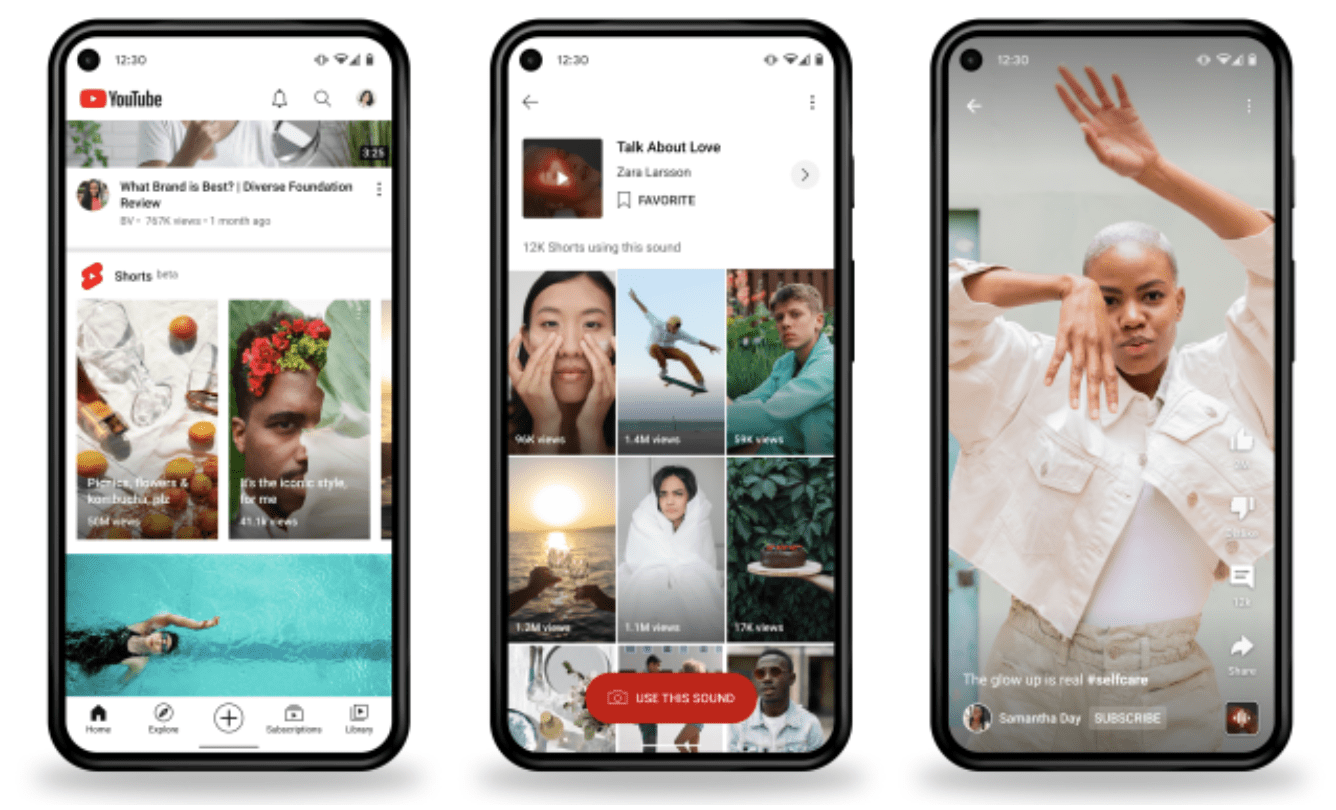The rise of TikTok is one of the most phenomenal stories in the digital world. Since launching globally in 2018 through a merger with Musical.ly, TikTok has become a multi-billion-dollar advertising machine. TikTok has more than 1 billion members, has surpassed Snapchat to become the most popular app with teens, and is on course to earn more than $11 billion in ad revenue in 2022.
TikTok has succeeded by becoming the preferred app for short-form videos. Although users can post videos that are as lengthy as 10 minutes, the ideal TikTok video is about 30 seconds long. Some of the most popular TikTok videos of all time, racking up billions of views, are blink-and-you’ll-miss-them short. As a result of TikTok’s popularity, brands are spending more money advertising on the app, which is a threat to more established apps such as YouTube and Instagram.
Because of TikTok’s popularity, YouTube and Instagram have responded in kind by launching short-form video features. For example, in 2021, YouTube rolled out Shorts globally after a more limited launch in India in 2020. Although YouTube Shorts is not yet a source of meaningful advertising revenue for YouTube, it is gaining traction with brands.
What Is the YouTube Shorts Feature?
Shorts is basically a TikTok copycat. Using the YouTube app, people can quickly and easily create short videos of up to 15 seconds. The videos are created on mobile devices and viewed, in portrait orientation, on mobile devices. And once you open one short, you essentially access the motherlode in that videos start playing one after the other. Just swipe vertically to get from one to the next.
Shorts, much like TikTok, provides editing tools you can use to flex creative muscle. Users can string clips together, adjust playback speed, and add music and text. And as YouTube has blogged, creators can play off of existing content: “[Y]ou can give your own creative spin on the content you love to watch on YouTube and help find it a new audience—whether it’s reacting to your favorite jokes, trying your hand at a creator’s latest recipe, or re-enacting comedic skits.” (Notably, creators are in control of their material; they can opt out of having their long-form videos remixed in this way.)
According to YouTube, more than 1.5 billion people use Shorts – impressive numbers that actually surpass TikTok’s user base. It was only a matter of time before YouTube made it possible for brands to get involved creating their own Shorts. And they are.
How Are Brands Using YouTube Shorts?
As reported in The Wall Street Journal, brands are increasingly experimenting with ways to engage with users on Shorts. For example:
- Kitchen and home marketplace Food52 is posting Shorts that offer sneak peeks at its longer-form content on the traditional version of YouTube, as well as repurposing some recipe videos.
- Drupely’s olive-oil brand Graza says it is creating user engagement by posting how-to cooking and recipe content. According to Graza, videos focused solely on Graza products do better on TikTok than on Shorts.
- Glossier sold products through Shorts in June by creating a challenge for users to try. Glossier gave about a hundred influencers a new pencil eyeliner and encouraged them to create Shorts videos with the hashtag #WrittenInGlossier in the caption. People who tapped the hashtag were brought to the Glossier website. There, they could buy the eyeliner and were asked to recreate a look as part of the challenge. Any Shorts video that included the hashtag was shoppable.
- Danessa Myricks Beauty used a short to promote its launch in Sephora. The Short built excitement for the launch by featuring the sending off a package of its product to be sent to Sephora stores.
- NBC’s The Voice relied on Shorts to feature hosts for its most recent season. The ad included a banner at the end with clear directions for viewers on when and where to watch the show.
This is all encouraging for Shorts, but the feature is not yet a revenue generator, and YouTube is under pressure to staunch the flow of ad dollars to TikTok. On top of that, Instagram is turning up the heat with its own TikTok challenger, Reels.
Even so, YouTube is striking a note of optimism.
Philipp Schindler, senior vice president and chief business officer at Google, said during second-quarter earnings call in July. “…[E]arly results in Shorts monetization are also encouraging, and we’re excited about the opportunities here.”
It’s early days for Shorts and brands. Meanwhile, Shorts has one big advantage over TikTok: integration with YouTube, which has 2.6 billion active users. This is important because YouTube can promote Shorts to the built-in user base, and brands can connect Shorts content to their already established YouTube presence.
What Brands Should Do
- Know your audience. YouTube appeals to the 15-25-year-old demographic. It is also very popular among 26-35-year-olds. TikTok skews younger: it is most attractive to 16-24 year-olds.
- Experiment with Shorts. See how repurposing short-form content from other platforms works. Try posting original content, too. Are you getting the same results with the same content on all platforms, or are you better off creating original video for Shorts, TikTok, and Instagram? (A recent study shows that both ads created in TikTok and repurposed can be effective.)
- Be ready to capitalize on Shorts ad formats when they become available widely. For instance, brands will be able to connect their product feeds to their campaigns and make video ads on YouTube Shorts more shoppable.
- Understand how to integrate Shorts ad formats into a broader YouTube advertising strategy that includes skippable video ads, bumper ads, overlay ads, and others.
- Consider partnering with influencers, especially individual creators. YouTube is building a community of creators on Shorts. As they grow in prominence, they are more naturally appealing to brands.
Contact True Interactive
We deliver results for clients across all ad formats, including video and mobile. To learn how we can help you, contact us.
